National Go Fishing Day is observed annually on June 18 and is the perfect day for anglers to escape from their daily routine – find a stream, a lake, or pond – bait the hook, cast the line, and catch a fish!
#NationalGoFishingDay is also a perfect time to highlight basic food safety tips for preparing and storing fish – to reduce the risk of foodborne illness.
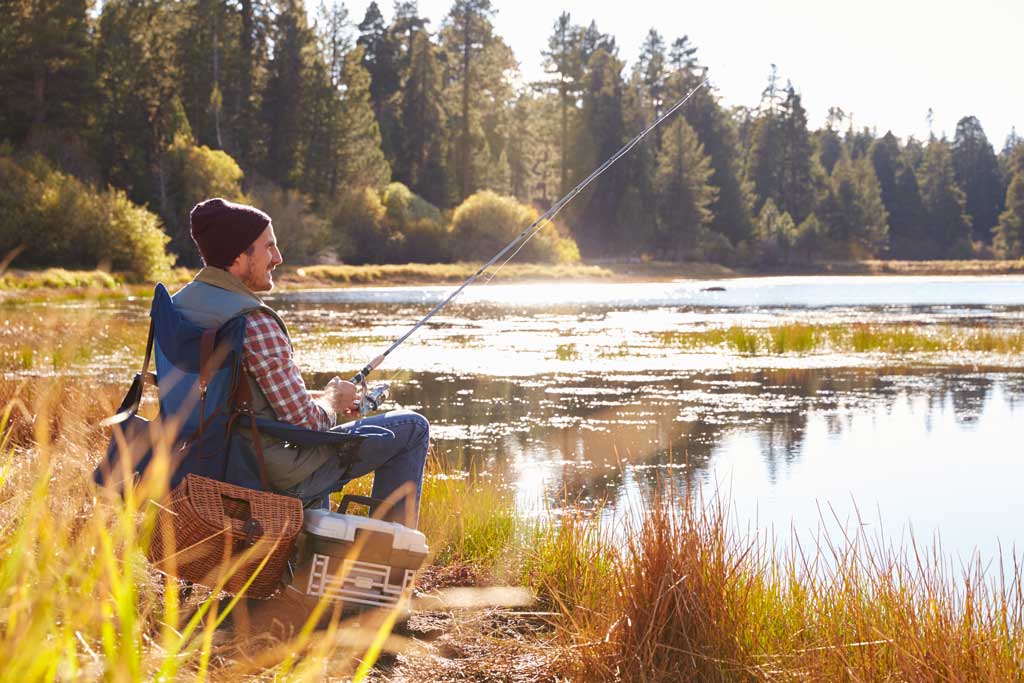
Keeping Your Fish Catch
Fish meat is very delicate and if not properly handled it will lose taste and texture very quickly and can spoil in a very short period of time.
Immediately after a fish dies the meat begins to deteriorate. The best way to ensure fresh meat is to keep the fish alive. If the fish perishes, remove them and immediately place them on ice.
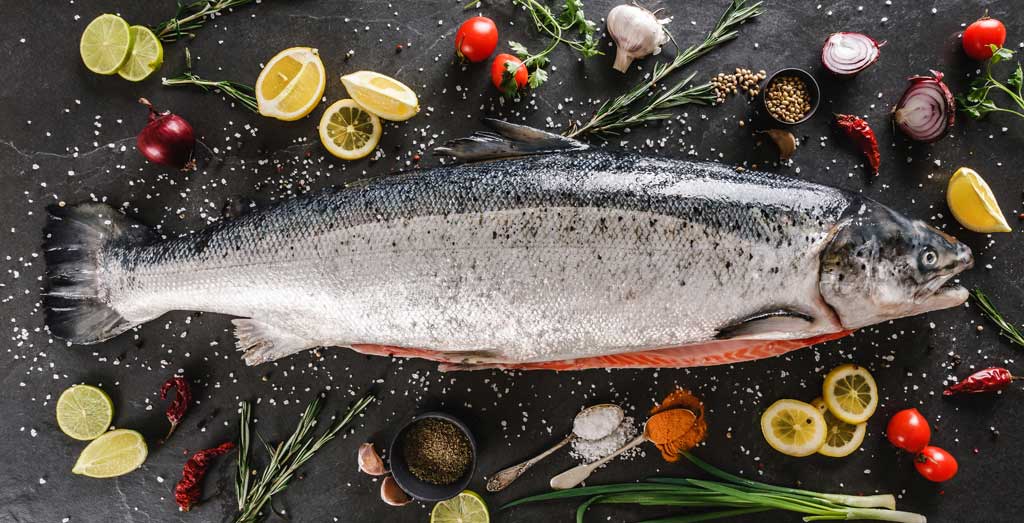
Freshwater Fish
- Aerated live wells. Put fish in the live well and change the water regularly especially if the fish is large or the well overcrowded
- Stringers. Insert the stringer through the fleshy part of the lower jaw (never the mouth or gills) and put the stringer in the water
- Fish baskets. Put the fish in the basket and lower into the water
Saltwater Fish
- Cooler full of ice. Immediately place fish on top of the ice, or pack ice around them. Icing quickly chills the fish and can be stored for several days. It is advised to keep the cooler drained of all the water from melting ice; fish floating in water adversely affects the texture and the flavor of the meat & begins the spoilage process.
- Aerated live wells. Put fish in the live well and change the water regularly especially if the fish is large or the well overcrowded
Storage of Cleaned Fish
It is important to store your dressed fish properly, so determine beforehand when you plan to cook the fish.
If you plan to eat the fish in a couple of days, you can store it in the refrigerator. First pat down the fish with a towel to remove excess moisture then place in a plastic bag or container, and put in the refrigerator.
For longer than 3 day, you must freeze the fish which will last for months in the freezer.
Seafood Safe Cooking Temperature
Despite its spelling, seafood includes all aquatic animals, both freshwater and ocean creatures. Seafood, as with any food, requires certain safe handling to reducing the risk of foodborne illness (also called food poisoning).
Seafood should be cooked to an internal temperature of 145ºF or appear opaque and separate easily with a fork when done.
Learn what are the good choices you can make when it comes to seafood, and why you should make them. Likewise, follow simple food safety tips so you can confidently select, store, prepare and cook seafood safely!
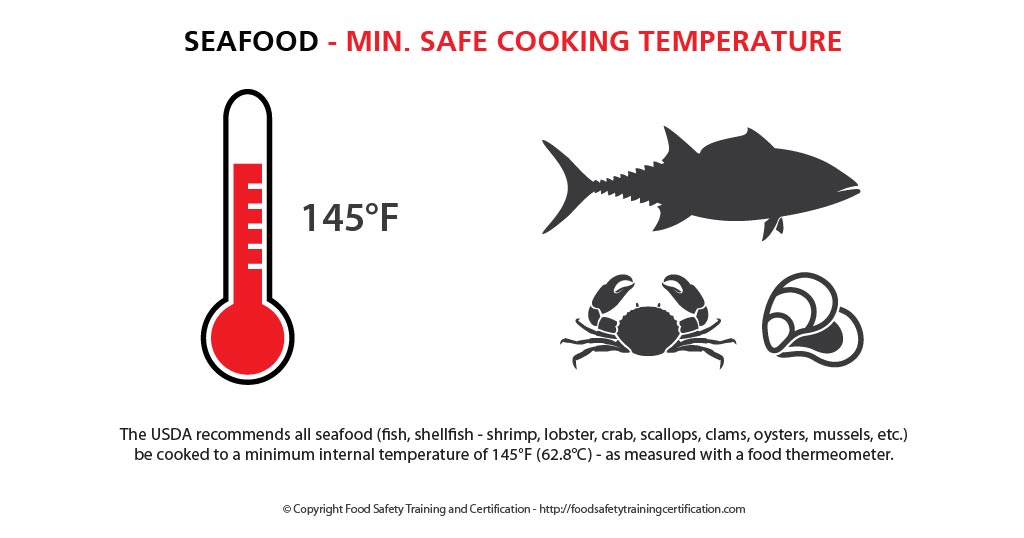
Selecting Safe Seafood
Determining Fresh Seafood
Only buy fish that is refrigerated or displayed on a thick bed of fresh ice that is not melting (preferably in a case or under some type of cover).
- Fish should smell fresh and mild, not fishy, sour, or ammonia-like.
- A fish’s eyes should be clear and bulge a little.
- Whole fish and fillets should have firm, shiny flesh and bright red gills free from milky slime.
- The flesh should spring back when pressed.
- Fish fillets should display no discoloration, darkening or drying around the edges.
- Shrimp flesh should be translucent and shiny with little or no odor.
Some refrigerated seafood may have time/temperature indicators on their packaging. Always check the indicators when they are present and only buy the seafood if the indicator shows that the product is safe to eat.
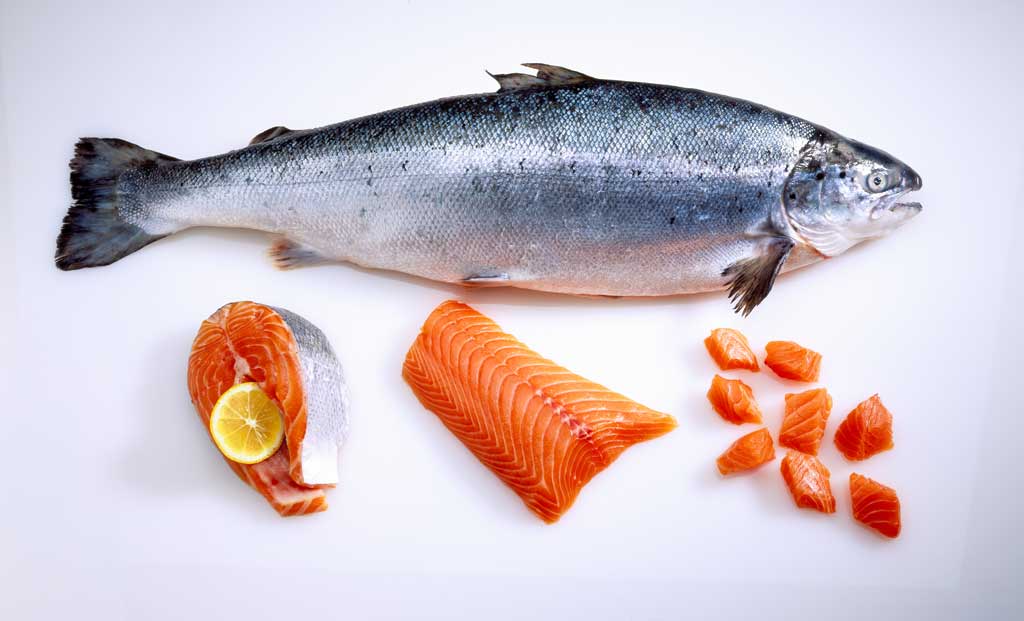
Frozen Seafood
Frozen seafood can spoil if the fish thaws during transport and is left at warm temperatures for too long. Follow these tips when selecting frozen seafood:
- Don’t buy frozen seafood if its package is open, torn, or crushed on the edges.
- Avoid packages that are positioned above the “frost line” or top of the freezer case.
- Avoid packages with signs of frost or ice crystals
Shellfish
Follow these general guidelines for safely selecting shellfish:
- Look for the label: Look for tags on sacks or containers of live shellfish (in the shell) and labels on containers or packages of shucked shellfish. These tags and labels contain specific information about the product, including the processor’s certification number. This means that the shellfish were harvested and processed in accordance with national shellfish safety controls.
- Discard Cracked/Broken Ones: Throw away clams, oysters, and mussels if their shells are cracked or broken.
- Do a “Tap Test”: Live clams, oysters, and mussels will close up when the shell is tapped. If they don’t close when tapped, do not select them.
- Check for Leg Movement: Live crabs and lobsters should show some leg movement. They spoil rapidly after death, so only live crabs and lobsters should be selected and prepared.
Store Properly
Put seafood on ice or in the refrigerator or freezer soon after buying it. If seafood will be used within 2 days after purchase, store it in the refrigerator. Otherwise, wrap it tightly in plastic, foil, or moisture-proof paper and store it in the freezer.
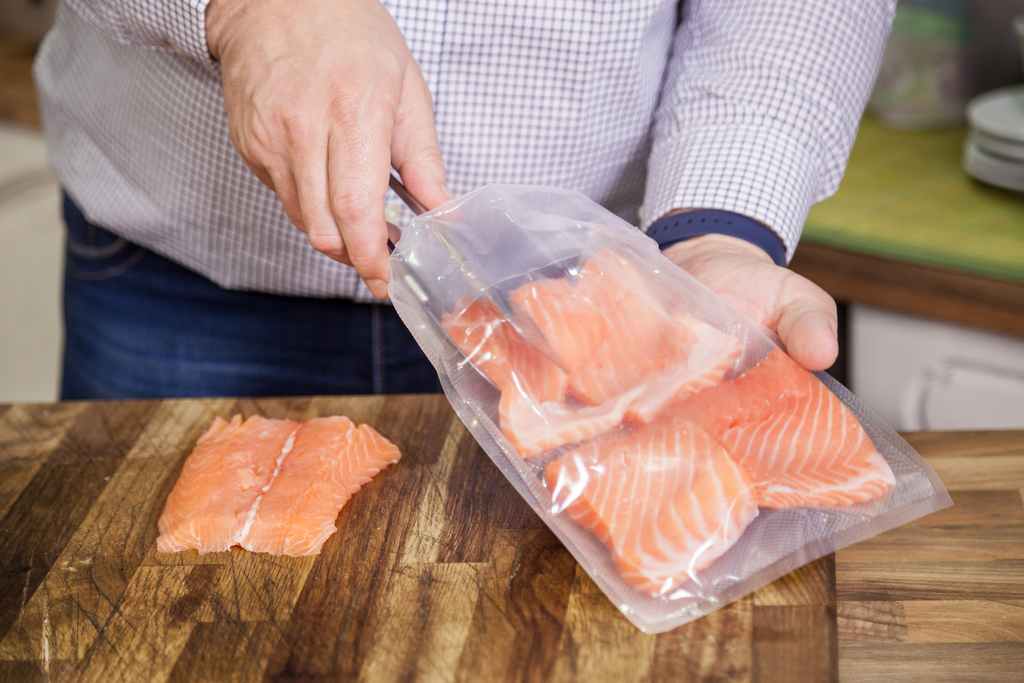
Avoid Cross-Contamination: Separate for Safety
When preparing fresh or thawed seafood, it’s important to prevent bacteria from the raw seafood from spreading to ready-to-eat food. Take these steps to avoid cross-contamination:
- When buying unpackaged cooked seafood, make sure it is physically separated from raw seafood. It should be in its own display case or separated from raw product by dividers.
- Wash your hands for at least 20 seconds with soap and warm water before and after handling any raw food.
- Wash cutting boards, dishes, utensils, and counter tops with soap and hot water between the preparation of raw foods, such as seafood, and the preparation of cooked or ready-to-eat foods.
Prepare Safely
Thawing
- Thaw frozen seafood gradually by placing it in the refrigerator overnight. If you have to thaw seafood quickly, either seal it in a plastic bag and immerse it in cold water or — if the food will be cooked immediately thereafter — microwave it on the “defrost” setting and stop the defrost cycle while the fish is still icy but pliable.
Cooking
Most seafood should be cooked to an internal temperature of 145ºF. If you don’t have a food thermometer, there are other ways to determine whether seafood is done.
- Fish: The flesh should be opaque and separate easily with a fork.
- Shrimp and Lobster: The flesh becomes pearly and opaque.
- Scallops: The flesh turns opaque and firm.
- Clams, Mussels, and Oysters: The shells open during cooking — throw out ones that don’t open.
Uncooked spoiled seafood can have an ammonia odor. This odor becomes stronger after cooking. If you smell an ammonia odor in raw or cooked seafood, do not eat it.
Serving
Follow these serving guidelines once your seafood is cooked and ready to be enjoyed.
- Never leave seafood or other perishable food out of the refrigerator for more than 2 hours or for more than 1 hour when temperatures are above 90ºF. Bacteria that can cause illness grow quickly at warm temperatures (between 40ºF and 140ºF).
- Carry picnic seafood in a cooler with a cold pack or ice. When possible, put the cooler in the shade and keep the lid closed as much of the time as you can.
- When it’s party time, keep hot seafood hot and cold seafood cold:
- Divide hot party dishes containing seafood into smaller serving platters. Keep platters refrigerated until time to reheat them for serving.
- Keep cold seafood on ice or serve it throughout the gathering from platters kept in the refrigerator.
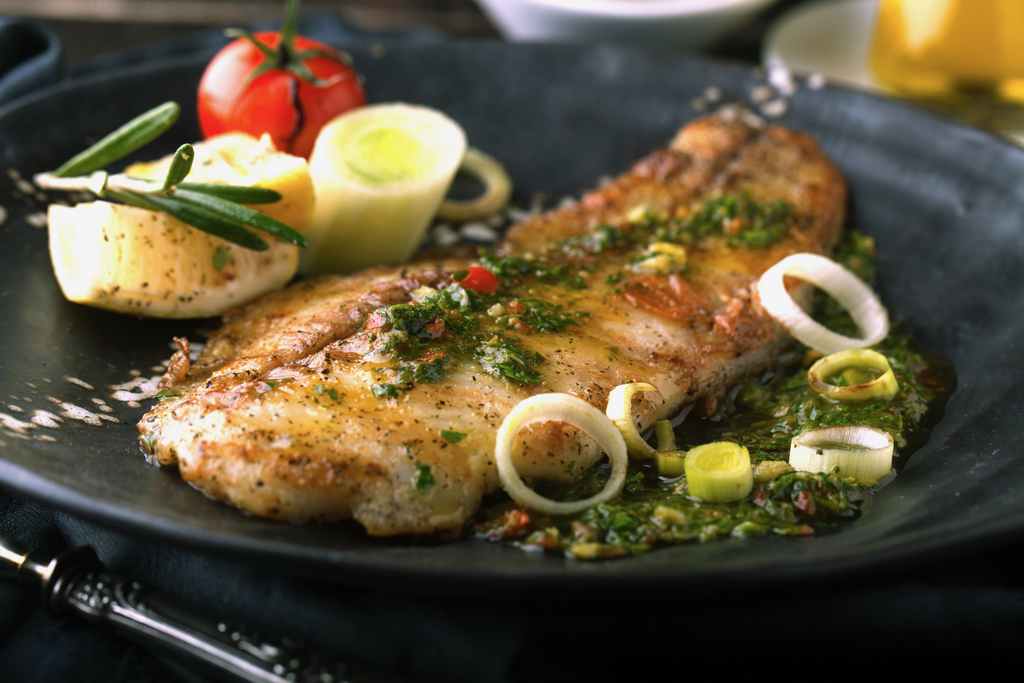
Raw Seafood Dangers
It’s always best to cook seafood thoroughly to minimize the risk of foodborne illness. However, if you choose to eat raw fish anyway, one rule of thumb is to eat fish that has been previously frozen.
- Some species of fish can contain parasites, and freezing will kill any parasites that may be present.
- However, be aware that freezing doesn’t kill all harmful microorganisms. That’s why the safest route is to cook your seafood.
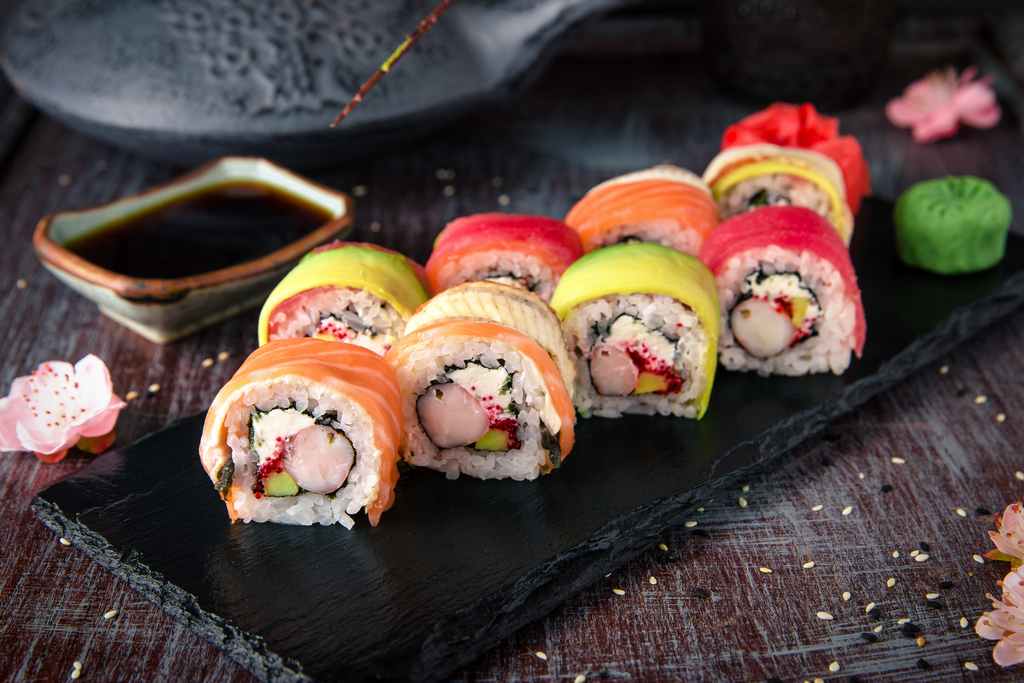
Eating Fish: What Pregnant Women and Parents Should Know
The FDA and EPA have issued advice regarding eating fish. This advice is geared toward helping women who are pregnant or may become pregnant – as well as breastfeeding mothers and parents of young children – make informed choices when it comes to fish that is healthy and safe to eat.
For women of childbearing age (about 16-49 years old), especially pregnant and breastfeeding women, and for parents and caregivers of young children.
- Eat 2 to 3 servings of fish a week from the “Best Choice” list OR 1 serving from the “Good Choice” list.
- Eat a variety of fish.
- Serve 1 to 2 servings of fish a week to children, starting at age 2.
- If you eat fish caught by family or friends, check for fish advisories. If there is no advisory, eat only one serving and no other fish that week.*
You can use this chart to help you choose which fish to eat, and how often to eat them, based on their mercury levels. The “Best Choice” have the lowest levels of mercury.

Additional Seafood Safety Info
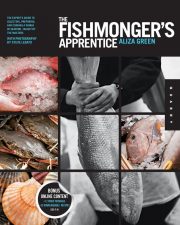 The Fishmonger’s Apprentice: The Expert’s Guide to Selecting, Preparing, and Cooking a World of Seafood, Taught by the Masters
The Fishmonger’s Apprentice: The Expert’s Guide to Selecting, Preparing, and Cooking a World of Seafood, Taught by the Masters
In The Fishmonger’s Apprentice, you get insider access to real life fishermen, wholesale markets, fish buyers, chefs, and other sources—far away from the supermarket, and everywhere the fish go well before they make it to the table. This book is a handbook for enjoying fish and seafood—from fishing line to filleting knife and beyond—and gives you instructional content like no other book has before. Whether you’re a casual cook or devoted epicure, you’ll learn new ways to buy, prepare, serve, and savor all types of seafood.
- Eating Fish: What Pregnant Women and Parents Should Know
- FoodSafety.gov: Your Gateway to Federal Food Safety Information
- Food Safety for Moms-to-Be
- Vibrio Vulnificus Health Education Kit – Educational Campaign Warning the Hispanic Community About the Risks of Eating Raw Oysters
- Taking Kids Fishing
- Safety Tips
- Youth Fishing – Fishing Safety and Rules
- Ice Fishing Safety
- Safe Fishing Practices
Types of Fishing
- Freshwater Fishing Techniques
- Saltwater Fishing Techniques
- Fly Fishing
- Ultimate Fly Fishing Resource Guide
- Ice Fishing
- Fishing Techniques
- How Fish Are Caught
- Fishing Methods
- Sustainable Fishing Methods
- Fishing Gears and Techniques
- Fishing Methods List
- Freshwater Fishing Tips and Tricks
Fishing Organizations
- American Casting Association
- American Sportsfishing Association
- International Game Fish Association
- International Federation of Fly Fishers
- Take Me Fishing
- B.A.S.S. Bassmaster
- FLW Outdoors
